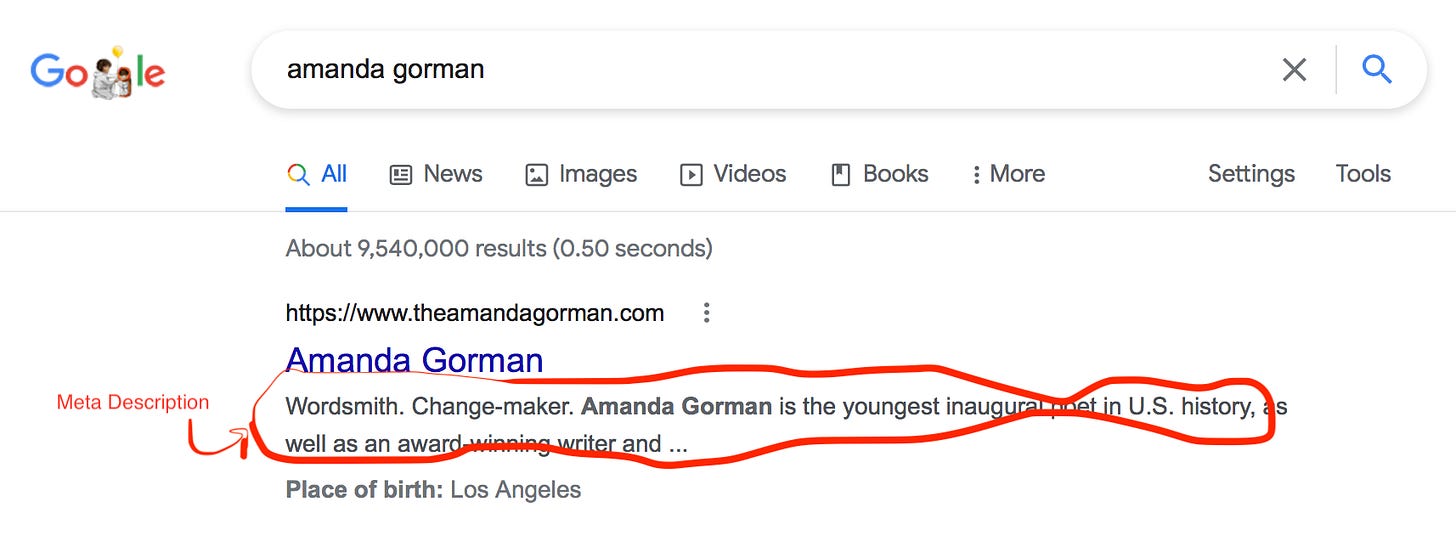Last week, I wrote in SEO Part 1 about how authors and writers can craft content for SEO.
This week, I’m covering Part 2, the technical parts of how to optimize your book and writing (blog posts) for SEO.
Remember, SEO is an important part of your online presence. It’s how search engines like Google know what to show people when they look for something online. You want to do everything you can to make your author presence and your books appear if anyone searches for you, your subject matter, or your genre.
1. Generate a Sitemap
A sitemap is a structured listing of all the pages on your blog or website that tells Google and other search engines about the structure of your site. A sitemap also lets Google know when a new post is published so it can index it and add it to their search results.
Here are step-by-step instructions on how to get your content submitted to Google.
2. Metadata:
What is metadata? Metadata is any data or information that describes your content or book—including your title, subtitle, keywords, price, publication date, ISBN, and any other relevant information that readers use to find your book.
Metadata Starts with Good Headlines, Keywords, and Meta Descriptions
Having a good title tag that tells what the blog is about will help make your content easy to search.
Unfortunately, too many writers LOVE using fun or “gotcha” titles that don’t say anything about what the content is about. I have some examples of good and bad titles below.
a. Bad title: Watch this once in a lifetime event!
b. Good title: Watch the supermoon eclipse in 7 seconds.
Keywords: Have 3 to 7 keywords that describe your content. Examples for the headline above would be “supermoon,” “eclipse,” and “blood moon.”
Meta description: You need a short paragraph describing what your content is about. This content shows up in Google search results.
If you Google yourself or your book name, the meta description is what you want people to see or read about you. For example: A search for ‘Amanda Gorman’ returns her website and the meta description.
Book Metadata: Book metadata includes details such as the title, subtitle, price, publication date, ISBN. One strong case for using an ISBN number is it helps rank your books higher in search results if you have one.
Readers depend on good metadata to find their next read.
3. Make Sure Your Site Is Mobile-Friendly
Because a lot of users now read on smartphones and other mobile devices, Google changed their algorithm in April 2015 to penalize any sites that are not optimized for mobile devices. You might even say that we are a mobile-first economy, so make sure your content can be read on a small screen.
A good way to test if your site is mobile-friendly is by leveraging another of Google’s tools. You can click the link below and follow all their instructions.
Google Mobile-Friendly Test Tool
Let me know if you have any questions. Next week, I’ll write about how to optimize for discoverability on Amazon and voice search for smart speakers like Google Home or Amazon Echo devices .
Cheers,
Miral
P.S. Did you like this content? I would love if you shared this with your author friends.



